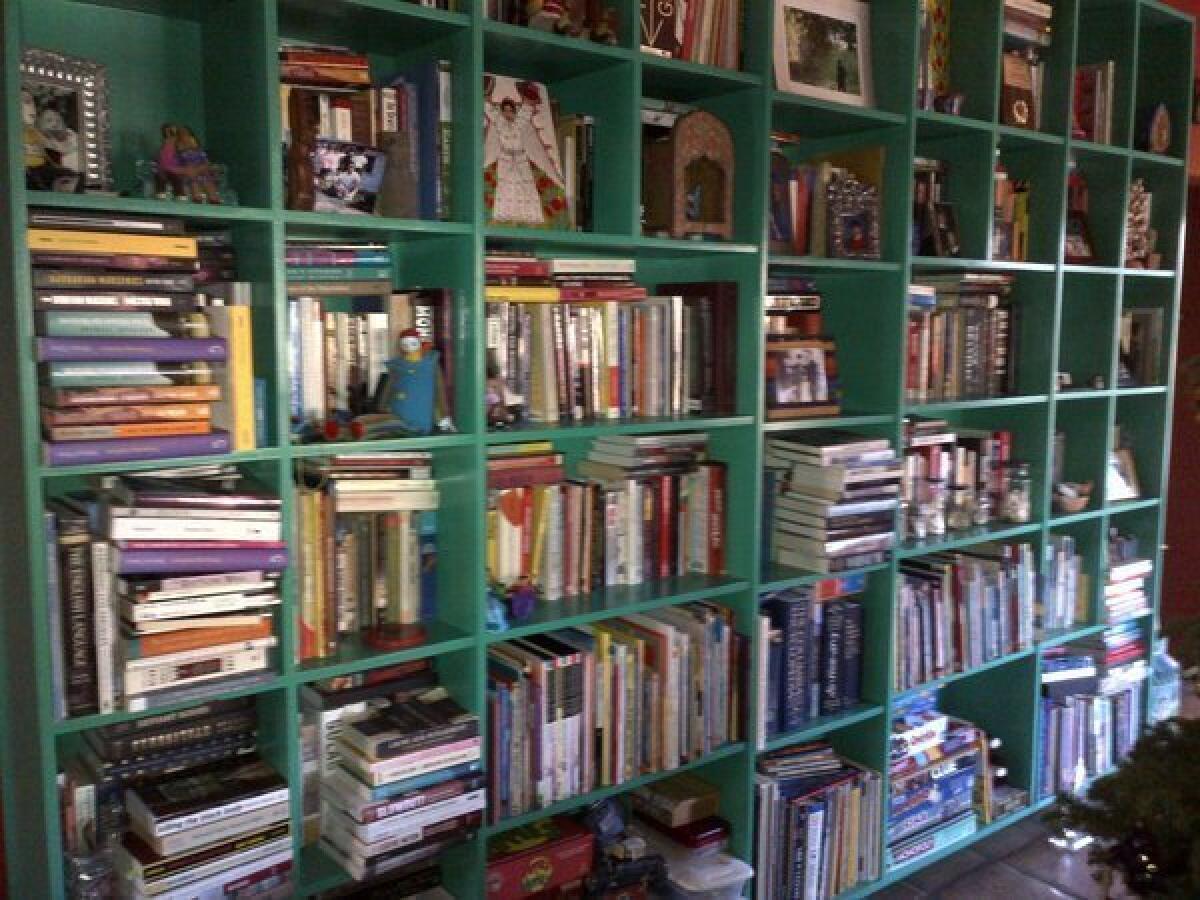Tackling bookshelf chaos: One author’s resolution

- Share via
My first resolution for 2013 is one many bibliophiles make. And it’s also the resolution I’m least likely to complete to my satisfaction this year: I’m going to organize my book collection.
The other things on my list are easy: Finish a book? I’ve got just a few chapters left on the one I’m writing now, my fourth. Keep off the weight I lost last year? With a little will power and lots of tofu and vegetables, that’ll be a piece of cake.
The status of my book collection, however, is a very nearly unfixable disaster. I own, I’m guessing, several hundred volumes -- for many reasons, the exact size of my collection is unknowable. My book collection is in a state of disorder many decades in the making. I have books boxed and shelved in four different places. More than once in the last few years, I’ve gone to a bookstore to buy a copy of a book I need and which I already own -- but which I can’t find, despite driving back and forth across L.A. to the places where my books live. (Anyone need a copy of “Song of Solomon”? I have three. I think.)
As you can imagine, then, it really makes me crazy when I read about all these famous authors and their beautifully organized book collections, and how much effort they put into organizing their shelf space.
“ ‘You can tell how serious people are by looking at their books,’ ” Susan Sontag told the novelist Sigrid Nunez once, as we learned in a post last week on the Paris Review website. “She meant not only what books they had on their shelves, but how the books were arranged,” Nunez says. “Because of her, I arranged my own books by subject and in chronological rather than alphabetical order. I wanted to be serious.”
By this definition, I am not serious. My books are in a haphazard, ad hoc arrangement that barely makes sense, even to me. Most of my history books and biographies are at home. About half of the books I bought when I was in college and when I was a bachelor are in a storage facility. Some of the books I’ve used in my work as a journalist are at my desk at The Times. Many of the books that mean the most to me as a writer, and that have taught me the most, are in a small studio space I rent.
I spend long hours in that studio writing, alone, with Borges, Nabokov, Cervantes, Gunter Grass and Nadine Gordimer close to me. They’re in that space not for chronological or alphabetical reasons, but for purely artistic and emotional ones. I need them near me. “Ulysses” I have at home, next to my bed, because I’m going to read it this year -- if I keep another one of my resolutions.
I own several rare, long out-of-print books that are all in different places. I’ve got a copy at home of “Cesar Chavez: Autobiography of La Causa,” which I bought for a few dollars from an online seller who didn’t notice or care that it was signed by the late civil rights leader himself. In my studio I have a copy of “Los Angeles Before the Freeways,” a wonderful collection of photographs of the late 19th century and early 20th century city. And in storage I have a first edition, unabridged copy of “We Shall Be All,” Melvyn Dubofsky’s wonderful history of the Industrial Workers of the World.
One day, perhaps, I’ll bring all those books together in one killer set of shelves in that big home I’ll buy when I become a truly “serious” and rich author. But for now, I’m just a poor, disorganized slob who’s got a day job and three kids at home -- each of whom has his or her own shelf space that’s starting to fill up.
My daughter’s bookshelves are very organized. She’s got a nearly complete set of the “Magic Tree House” books in chronological order, along with “The Spiderwick Chronicles,” and one shelf with the entire oeuvre of a journalist-detective mouse named Geronimo Stilton. Of course, she’s only 8 years old. Give her a few decades and she too might reach her old man’s heights of bibliomanic chaos.
ALSO:
15 literary resolutions for 2013
Hate the fiscal cliff? It’s on the 2013 list of words to ban
Faces to Watch 2013: Emily Rapp, Valla Vakili, Michelle Meyering, Jim Gavin, Lisa Hanawalt
More to Read
Sign up for our Book Club newsletter
Get the latest news, events and more from the Los Angeles Times Book Club, and help us get L.A. reading and talking.
You may occasionally receive promotional content from the Los Angeles Times.











